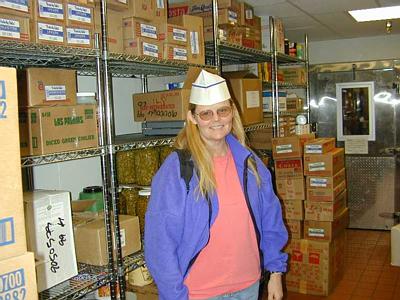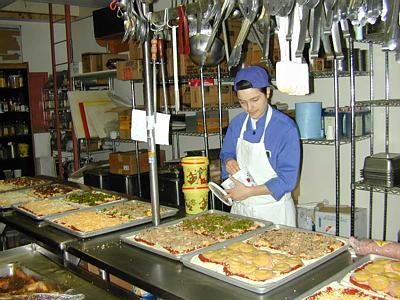23 November, 1999
Update on the ASA Educational Collaboration Project
We have held a number of sessions with the ASA volunteer parcticipants now
and have learned a lot about the kinds of jobs and time schedules on which
these folks work. Our first meeting started with 17 people in attendance.
Prior to the meeting I met with one person who was going to the South Pole
to inspect some electrical work being done on the building projects. I met
with another person who works as a cook and was not free until after half
way through our first session. Then there were two injured volunteers, one
from the fire department and the other from the field who were not available
during our scheduled workshops so we met with them also. Yet another
volunteer is with the Norbert Wu diving project (artist photographer in
residence) and did not get back from a dive tending until well after the
first workshop was over. On the bright side, most of the parcticipants who
could not make the first session did contact us ahead of time. We also had
one person who just dropped in and signed up to work with us. We did not
turn him away.
Prior to our first workshop, teachers had an opportunity to apply for an ASA
collaborating e-mail partner. The requests came from teachers working with
all grade levels, but mostly from middle school. As we began to assign
teachers to ASA volunteers, we found that most of the parcticipants wanted to
work with middle school classes and very few wanted to work with the high
school aged classes. The most frequently given reason was lack of comfort
with the subject material. I assume that people thought the students and
teachers would already know more than they did. This is a surprise to me.
During the workshop we spend the first part with a guest speaker who is
associated with one of the projects and who is willing to share their work
with the group. The parcticipants ask really good questions and we have a
fine time in discussion. We then talk about the e-mails they send, what
kinds of in formation to include and how much science they should include.
I always say that you can never have too much science. But we are asking
that people send short e-mails, but maybe send them more frequently. We
have a size limit on that which can be sent and we do not want the messages
to be bounced back because they are too big. We also have been taking
digital images of people at their work sites and sharing them so the
parcticipants can send images of themselves to their schools. I will include
a few here, but will save most of them for the parcticipants to use. We then
go to the computer classroom where 6 computers are available for our use
from 9:00 - 10:00 p.m. I really admire the people who are working with us.
They work a 9 - 10 hour day and then spend another 2-3 hours with us. This
makes for a really long day for them!
I have had several post docs and grad students ask about the work and ask if
they can have a teacher with whom to communicate. Of course, I said yes!
Some of the teachers who requested a collaboration partner will get a
scientist.
We make a brief presentation to a meeting of all the PIs and have had a
really positive reception from them.
If the snow lets up today, we plan a trip to the dry valleys tomorrow to
collect some rotifers and tardigrades from which I will be extracting some
DNA.

Ann Tolo showing me the kitchen. She works as a cook on the night shift.

Making delicious pizza! She has a masters degree in biochemistry.

Ann TOlo showing me the kitchen. She works as a cook on the night shift.
Contact the TEA in the field at
.
If you cannot connect through your browser, copy the
TEA's e-mail address in the "To:" line of
your favorite e-mail package.
|
